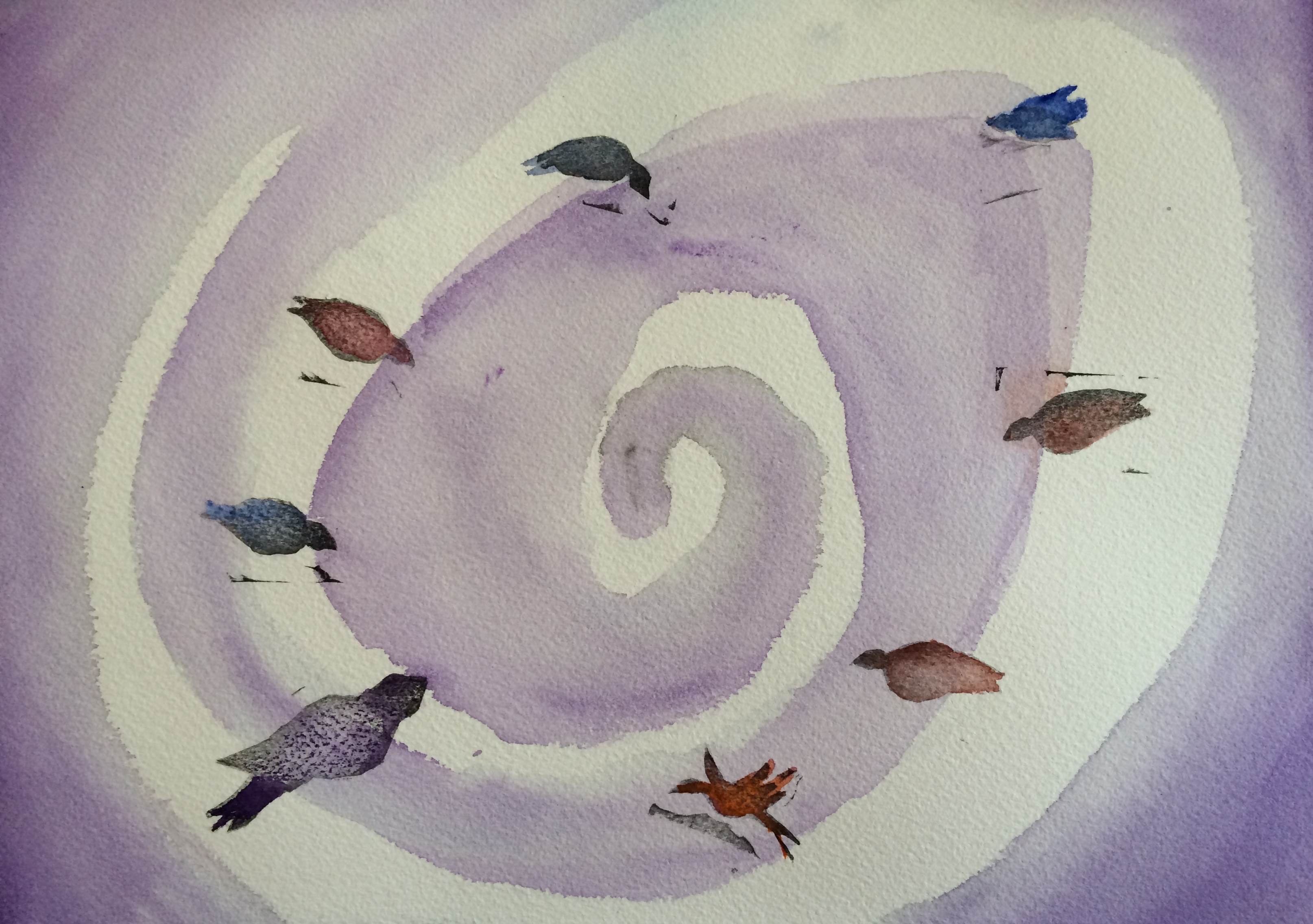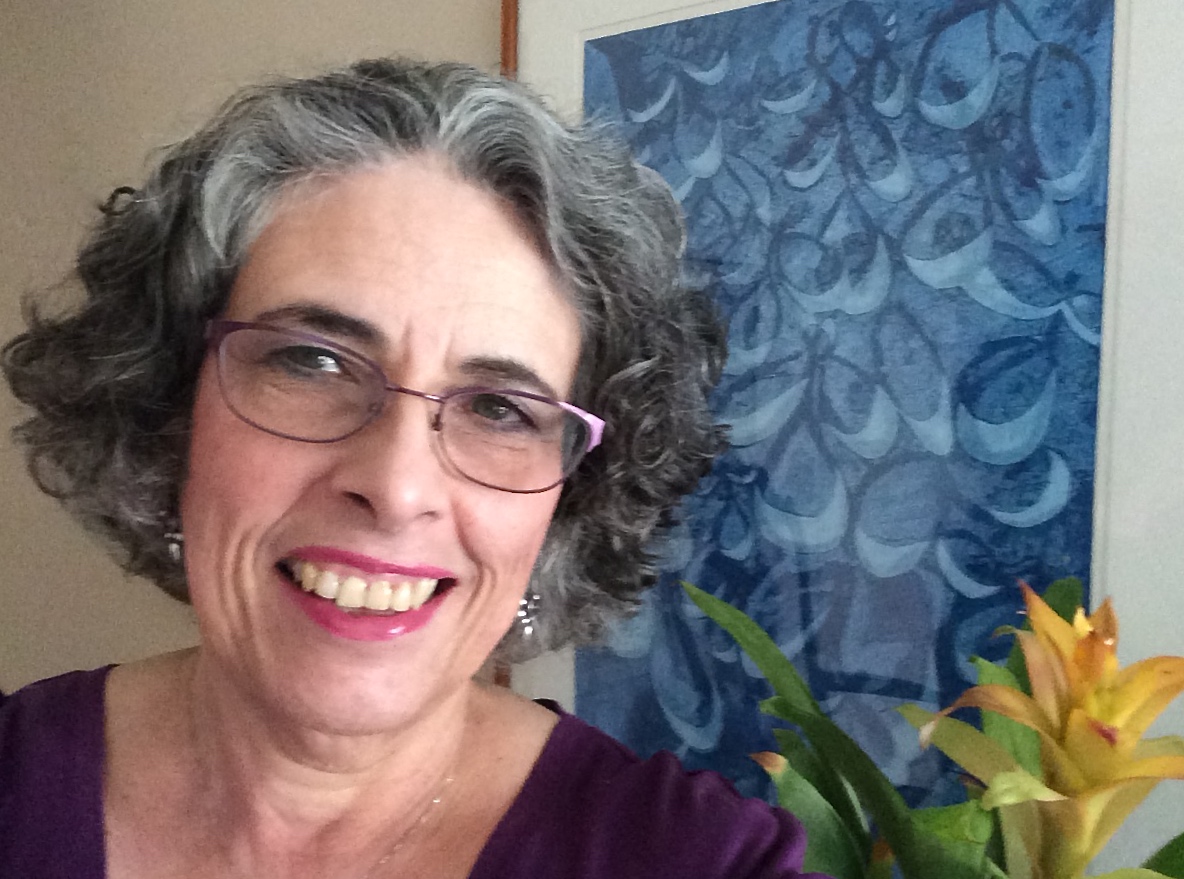December 18, 2019
During our 50th conference, Barbara Fish, PhD, HLM, ATR-BC, ATCS, LCPC was presented the 2019 Honorary Lifetime Member (HLM) Award, the highest accolade presented to any member of the AATA, in recognition of her vast contributions to the field and to the Association. Throughout her career, she has demonstrated excellence as a researcher, educator, clinician, artist, and leader. We asked Dr. Fish to answer some questions about her career and thoughts on the future of the profession.

Dr. Fish accepts the 2019 Honorary Life Membership Award during the awards ceremony at AATA’s 50th conference in Kansas City.
The requirements for this honor include extensive contributions to the field of art therapy, contributions to the professional advancement of art therapy, and achievement in the arts. Dr. Fish’s record is outstanding in each of these areas. “Barbara is a dedicated advocate for social justice, a committed art therapy educator and supervisor, an administrator, an artist, and a person who is a generous soul as she has given much of her life’s work, time and treasures to the field of art therapy,” one colleague wrote in support of her nomination. “Her ‘go-to’ specialty is supervision,” a School of the Art Institute of Chicago (SAIC) colleague said. “Students see Barbara as being a tough, no-nonsense instructor who pushes them to be the best they can be and is uncompromising in her stand on ethics and professionalism.”
What advice do you have for the next generation of art therapists? What advice did you receive from your mentors that still has an impact on you today?
During my early years as an art therapist, my mentors encouraged me to make art to guide my professional path and to actively participate in the AATA and my state organization. This was valuable advice. This ongoing practice led me to my interest in researching and teaching about the use of response art in art therapy. Image making has helped me explore professional and clinical issues as well as inform my supervisory work.
My advice for the next generation of art therapists is the same as the advice that was given to me. Use the tools that you offer to others to guide your own path. By employing our own creative process as a resource in our lives, we can understand the personal challenges and rewards of self-investigation. Without our ongoing personal practice, our requests for client involvement in image making can fall flat. I encourage art therapists to use their imaginations to explore, expanding the potential and public awareness of art therapy, envisioning new programs and opportunities for the work and new art-based ways to communicate about it.
I also recommend involvement in the AATA. By attending conferences, I have had the chance to meet those whose work I have read and engage them in discussion. I have also attended presentations of new material that advances the field. By serving on boards and committees, I was able to have input into decisions about the direction of the field of art therapy. It helped me to have a role in shaping the profession. Through AATA involvement I had opportunities to learn from others, share my ideas and build a professional network while developing deep personal friendships.
Has working with a particular client group or community shaped your professional focus or specialty? What have you learned from working with these clients?
Throughout my career, I have worked in hospitals, residential treatment settings and therapeutic schools, primarily with children and adolescents, the majority of whom were in state care. My work with them has informed and inspired my activism. The images made and stories told by children in treatment can be deeply disturbing. While working within these settings, I developed the concept of “harm’s touch” (Fish, 2006). This term points to how we are affected by what we witness. By making response art and writing to reflect on therapeutic relationships with children, I have been able to find meaning in witnessing these experiences, making them useful beyond treatment for training and presenting the complexities of this work. For that reason, my research into the use of response art, which is a fundamental practice that supports my work, has deepened my appreciation for the hazards and rewards of harm’s touch.
While working clinically, I teach in graduate art therapy training programs and supervise graduate students and those postgraduate art therapists seeking professional credentials. Providing supervision has also shaped my professional focus. I watched new therapists engage in art therapy practice and reflect on their work through their imagery, finding new ways to use response art to understand and communicate about their work. Through supporting their professional development, I remain aware of the need for increased public awareness of what art therapy can do in its wide applications. I look to art-based research to help to carry that information to a widening audience.
Fish, B. J. (2006). Image-based narrative inquiry of response art in art therapy (Doctoral dissertation). Retrieved from Dissertations & Theses database. (UMI no. AAT 3228081).
As we wrap up the AATA’s 50th Anniversary year, what memories or moments come to mind? Is there particular AATA accomplishment that makes you proud?
Because I have been an AATA member since the early eighties, I have so many memories of AATA that it is hard to narrow it down. The most important thing I can talk about is AATA’s ability to withstand conflict and its resilience. The field is filled with passionate professionals that hold deep convictions that are often expressed at the conference. We have had many conflicts over theory, policies, management, and social justice concerns. These take place in person, online, in presentations, business meetings and board rooms. This happens because we care about how the profession of art therapy evolves. But when the conflict appears deadlocked, those with energy and cooler heads step in to help us move forward. I am proud that we are an association that can hear dissent and cope with conflict. It makes us grow. I have found that when I have been a part of the abruption, if I hang on with respect for the integrity of the other side, the resolution has been helpful to the issue, moving the association forward.
How do you foresee the field in 10 or 20 years? In what direction do you want the profession to go?
I hope that we as a field become more visible to the public without losing the wide range of our approaches to art therapy. Our spectrum of creative interventions not only gives our field unique opportunities for healing but also complicates our ability to help the public understand art therapy’s range of uses. I hope we embrace art-based research methods as an authentic voice and find compelling evidence to communicate our work.
As a founding member of the AATA Social Justice Caucus, what hopes do you have as the Association continues to work on supporting diversity, equity, and inclusion?
I trust that the association will continue to strive toward diversity, equity and inclusion. The AATA Social Justice Caucus began with the intention of holding a forum to raise important issues and bringing them to the association’s attention. I hope that those who have recently left the AATA because they do not feel that they have been heard, return to the association. By doing so they can be apprised of and support the work that is already being done and contribute their efforts to guiding the association’s future.

“Supervision” by Barbara Fish. Watercolor, hand cut stamps and ink. 2015.
Artist’s statement: “I made this piece in response to my fieldwork supervision class. I used watercolor, hand-cut stamps and ink forming each bird stamp to represent a specific supervision group member. The birds perch on a spiral that connects us all. I wanted to represent the energy created and perpetuated by the supervision group. All contribute to the supervision process and are supported by it.”
 Dr. Fish currently lives in San Diego, California where she provides local and distance art-based supervision. Her work focuses on the use of response art in art therapy, art-based supervision and art-based research. She has provided art therapy supervision for more than thirty years for graduate students and professional art therapists who are seeking credentials. She is an adjunct faculty at Saint Mary of the Woods College and Mount Mary University.
Dr. Fish currently lives in San Diego, California where she provides local and distance art-based supervision. Her work focuses on the use of response art in art therapy, art-based supervision and art-based research. She has provided art therapy supervision for more than thirty years for graduate students and professional art therapists who are seeking credentials. She is an adjunct faculty at Saint Mary of the Woods College and Mount Mary University.
Dr. Fish has been a member of the AATA since 1980. Her service to the association includes serving on AATA’s Board of Directors as the Speaker of the Assembly of Chapters and as a Director. She has served as conference program chair and has worked continuously on many committees including the art, multicultural and program committees. She was a founding member of the social justice caucus and was the first president of the Art Therapy Credentials Board. Dr. Fish is a past president of the Illinois Art Therapy Association (IATA) and was awarded the IATA HLM in 1989 and the IATA Lifetime Achievement award in 2015. She presents her work regularly at the AATA, the IATA, and the Wisconsin Art Therapy Association (WATA) conferences as well as other art therapy and professional conferences and forums nationally and internationally.
Dr. Fish has worked extensively with children in state care, consulted to agencies and provided training in trauma informed practices. She has developed art therapy programs in schools, residential treatment and hospitals employing and providing training opportunities for art therapists and advocating for the interdisciplinary use of art therapy.
She has published professional articles and book chapters on response art, art-based research and art-based supervision. Her book, Art-based Supervision; Cultivating Therapeutic Insight Through Imagery was published by Routledge in 2017.
